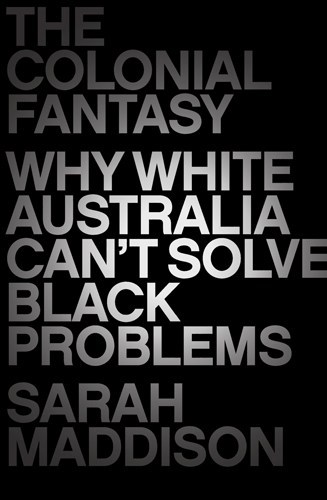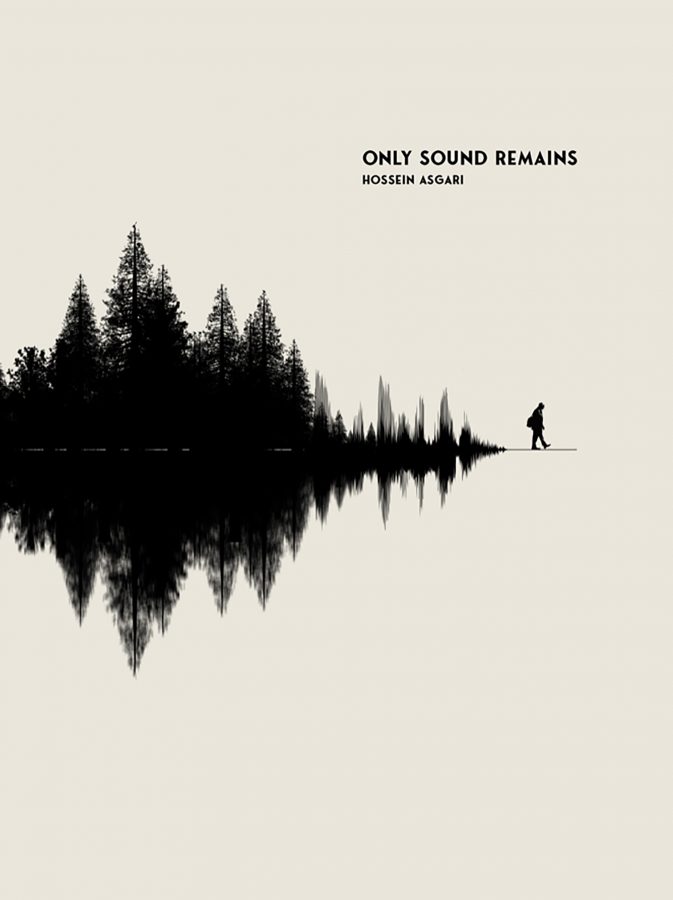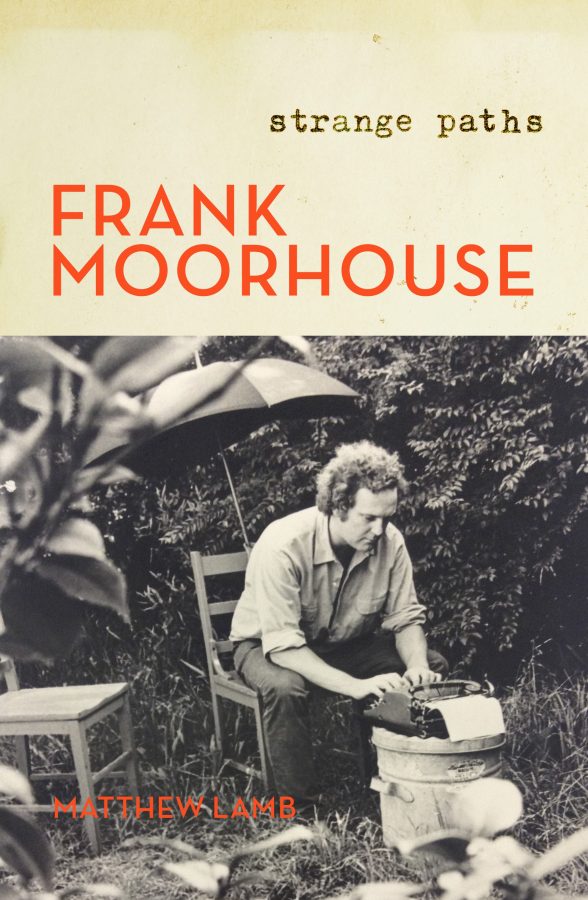I’m reading this book everywhere I go. That’s not an endorsement, but it is an observation.
I’m reading it on a plane that seats 34 people, whose wings protest at every jolt. I’m reading it by lamplight in a single bed while a snake repellent alarm goes off every two minutes.
I took this book out to Dhimbamburaay on Gomeroi country, my walaaybaa, a creek which by now is less of a body of water and more of a fire hazard. What I had known as lush water grasses rustling with animals were now dead yellow stalks that ground and creaked against one another in some mud. The bed was gone, I was restless.
I think things like: ‘There’s nothing wrong with the book.’ ‘It’s your leg with the bad veins tucked under you.’ ‘It’s a rock numbing the left cheek of your murru.’ ‘This review was due four months ago.’
Whether I took it to a lounge or to an office, to a park or to a food court, I was uncomfortable. I know that a gut feeling is not a review – especially when the stakes are things like the heat death of Dhimbamburaay, and especially not in a time where the non-specific ‘problematic’ takes us nowhere except to signal the pretence of critiquing power. I’m uncomfortable. It’s an inadequate and juvenile thing to say about a book, more a vanity of the reader than anything else, but it’s where we start.
The Colonial Fantasy: Why White Australia Can’t Solve Black Problems might have aimed for discomfort. But was it really my own, as an Aboriginal woman, that its author Professor Sarah Maddison wanted? Probably not.
I was an ill-placed reader, with my leg vein as it was, or maybe it was an ill-placed book, a rock in my murru. By now you likely can see the problem in this review. It’s already afraid to make an assessment of the work. Already vague and hedging and ready to place meaning or blame or whatever evaluative metric on something else. Already keen to call on the mysticism of the lamplight and a plane trip home to disguise this hedging as a courageous moral or intellectual position. All I really have to say is that The Colonial Fantasy is an alright book that is troubling me profoundly, everywhere I go.
I was troubled because I felt alone on that plane and in that bed and in that river and in that book. A book usually has an audience to feel part of – but Maddison’s book was effectively just holding audience over us.
However I felt, surely I wasn’t actually alone. Others are reading this book, even as this book was reading me. Who were they?
A cursory search of other reviews – another intellectual cowardice I afforded myself – found mostly white middle class respondents, sometimes authors themselves. Linda Jaivin, writing for the Saturday Paper, delivered a mostly descriptive review of both the book’s thesis and its political contents – fine, in a way, because how could you compress a complex 290 pages into an 800-word review and then somehow evaluate? A review by Carrie Croft for Books and Publishing noted that it ‘would recommend well to readers of the Quarterly Essay’. Granted, Croft was writing for a trade review where this information is useful. Nonetheless, it is an awkwardly brutal assessment for a scholar of Indigenous politics to receive, especially when that scholar claims to write against the paternalism of the well-meaning Quarterly Essay class.
The kind of engagements The Colonial Fantasy invites are also not really the fault of the author as much as they are symptoms of a settler-centric industry, but they’re worth recounting. The book was reviewed in the Australian Book Review by anthropologist Richard J Martin, but not by any of the big print outlets. It was extracted (but not reviewed) in The Guardian, and Maddison was interviewed by news.com.au. It’s also received a bit of attention on the ABC, but has otherwise been critically neglected. As far as I can tell, Indigenous critics have not had work published on the book and no reviews by settlers have really managed to grasp how The Colonial Fantasy reflects on their own lives and practices. If the critical reception lacks both Indigenous self-determination and settler self-reflection, that’s a telling silence.
The book went to the standard writers festivals, as well as the university and think tank circuit, and was the subject of talks at the kind of libraries that can afford it, mostly in metropolitan locations. I say this with no pretence about the thick layer of dirt on my hands, after all, I’m writing this for the Sydney Review of Books and also give talks to these audiences, but it bears thinking about if we care about the audience of social justice literature and who gains from our analysis.
How is it engaged with outside of the formal review ecosystem? On Goodreads, readers variously described it as a ‘vital’ account of the ‘problematic issues that persist for First Nation peoples as a result of the modern Australian state’ for ‘non-indigenous [sic] Australians’. One said it explained ‘the importance of self-determination, land and representation in order to improve indigenous [sic] disadvantage’. One said it was ‘frustrating…just how badly things have been managed’.
These are, of course, not reliable indicators of who is reading the book and how they think about it, but they are good indicators of the kind of people who are engaged in the public discussion of the book. Judging by these engagements on Goodreads, the book has ultimately been read as being about a failure to govern the native adequately (‘how badly things were managed’); that is, as a managerial question rather than a question of sovereignty.
You might notice that missing among these responses is the rest of Maddison’s thesis in Why White Australia Can’t Solve Black Problems. The point is first made on page xliii of the text: Why can’t White Australia solve Black Problems? ‘Because white Australia is the problem’. It’s a claim immediately circumvented by the title, which frames the book irretrievably about ‘Indigenous issues’, and the book’s content stays fixated on ‘Indigenous issues’. It’s a difficult tension to parse. What the book is saying it says looks quite different to the stories it actually tells, a friction not at all soothed by Maddison’s occasional reference to the ‘problem’ of ‘White Australia’.
A common feature of the publicity the book has received, using Ben Graham’s interview with Maddison for news.com.au as an example, focusses on acts of white Australia ‘giving power back’ because it has ‘worked’ in Turtle Island North America. It’s important to note that, even in US federal law, sovereignty was retained by, not given to, Native Nations. It is not a policy experiment based on public sympathy, results, or evidence – but a fundamental structure of Native self-government that is still regularly infringed by the US colony. Even when it appears that an Australian public ‘gets’ the idea of Indigenous sovereignty, the right to monitor its efficacy and the claim to benevolence and legitimacy remains. Our sovereignty becomes a colonial benevolence, a supervised gift to us that bolsters their legitimacy.
An Indigenous reviewer on Goodreads appeared to be the only one committed to the thesis when he said:
This book from Ms Maddison places the colonial desire for domination and control back into the political and ethical space of racism. Outlining the racist structures that prevent the release of Australia’s Indigenous from finding their own path due to continued colonial settler racist policy.
That’s a similar conversation I’ve had with other Indigenous people who have read it. However, the tendency for non-Indigenous readers, in the forests of Goodreads or the disciplined orchards of published critique, is to see almost precisely the opposite – a mismanaged or disadvantaged Indigenous public, rather than the colonial logic of managerialism itself. The answer becomes a more effectively-managed colony, not decolonisation.
Oppression becomes ‘indigenous [sic] disadvantage’ – a Black Problem. Despite Maddison’s explicit intent, could her readership be determinedly at cross-purposes, and does Maddison facilitate that? Similar critiques have been levelled at Robin DiAngelo (of White Fragility fame) by Lauren Michelle Jackson.
DiAngelo is a white woman who has spent decades deliberately mired in the race question. Much of her audience has not. How much can be learned in a single afternoon? I wondered. What good is a workshop?
Nothing Maddison recounts is necessarily wrong – but this is a book whose readership is either blak and knows the contents intimately, or is a particular kind of white for whom this is intellectual tourism into our alleged dysfunction.
That might be ungenerous. It is ungenerous. How does The Colonial Fantasy deal with its bifurcated audience of agreeing (and cited) Indigenous experts and the pervasively upper-middle class white and other settler scholarly readership of the Quarterly Essay that might not see itself as the white problem target of the book? Who, really, is this book for?
Maybe Sandra Phillips says it better:
People read what they assume and then write what they think they have read. Without our strategic intervention… readers just perpetuate colonial practices.
In her research on teaching Indigenous literature, Phillips found that students entered with presuppositions about First Nations storytelling and intellect, and took on only that which affirmed their assumptions. Those false knowledges, gleaned from ‘white witness’ media reporting, or from a persistently paternalistic primary and high school curriculum, will be difficult to challenge without intervening deliberately on the reader themselves. Unless the focus in Maddison’s book was trained entirely on the coloniser, and unless it didn’t use us as evidence, The Colonial Fantasy was doomed to be another book about Black Problems. That’s what her audience, besieged by the colonial fantasy itself, anticipate and so it’s what they see.
And it is maybe a good book, written by a witness to a plural blak politic that is always negotiating and wriggling in and out of the colonial fantasy she describes. It is this intense observation of the blak politic, rather than the white one, that makes the book so uncomfortable in its thesis. In her chapter on Recognition, Maddison describes the history of the push for sovereignty since the middle of last century as a campaign for recognition made possible through federalism, rather than an Indigenous articulation of the very real fragility of the Australian claim to sovereignty against ours. The book leans heavily on phrases like ‘calling for’, ‘widespread political attention’ – presuming the ubiquity or invisibility of the settler audience to whom the political call is made, centreing again, however unintentionally, the legitimacy of the coloniser to make decisions about us, even if the decision is to step back.
This isn’t a book that is clearly about White Australia. It’s about us. It fails to turn inward to see itself, and in doing so, fails to see White Australia in any great detail.
This is a book about Black Problems. It is getting treated as such by its settler readership. To what extent does Sarah Maddison bear responsibility for this? I have no idea, but it’s not as if there is no precedent for books by settlers that each stake a claim to the ‘truth’ about us – even if the truth is ‘step back and listen’.
It recalls Amy McQuire’s recent theorising of the Black and White Witness:
While the White Witness thrives on accounts of the brutalisation of black bodies, most commonly of black women and children, the Black Witness pushes these same black women to the forefront—they are the ones with the megaphones in the centre of the Melbourne CBD—in the very heart of white, respectable space.
And the work of Alexis Wright in this space:
I have seen how stories have been manipulated to achieve certain political outcomes, for example, those stories that are intended to play around with the sense of Aboriginal identity—that impose a sense of self-censorship, shame and friction in the Aboriginal community itself; or superficial stories intended to create a negative image of Aboriginal people with the aim of shaping a national perspective of acceptance for achieving political outcomes—think Northern Territory Intervention.
And the work of Aileen Moreton Robinson in Talkin Up to the White Woman:
The interpersonal extrinsic relations… between Indigenous women and white women are linked to the exercising of white race privilege derived from colonisation.
And the work of Maggie Walter:
Aboriginal people are largely invisible, as people and as peoples, in conceptions of everyday Australian life except as pejorative (statistically-informed) stereotypes. This invisibility extends to the nation-state’s concept of itself and the business of state, except, reluctantly, as a seemingly unresolvable ‘equity issue’.
And the work of Rosalie Kunoth Monks:
Don’t try and suppress me and don’t call me a problem. I am not the problem.
I have never left my country nor have I ceded any part of it. Nobody has entered into a treaty or talked to me about who I am. I am Arrernte Alyawarre female Elder from this country. Please remember that. I am not the problem.
I am not something that fell out of the sky for the pleasure of somebody putting another culture into this cultured being.
All Indigenous intellectuals and scholars who, appropriately, Maddison cites.
How does The Colonial Fantasy fit into the extensive field of blak scholarship it cites on this very issue? The advantage of having it curated into one place is an exhaustive and worthwhile task, but does this book drive us to read these as authorities in place of its account of them? If so, what does it offer that’s unique outside of collating? In doing the work of collation, does Maddison get unfairly elevated as an authority on blak business, and on how she’s minding hers?
After all, the theatre of passing the mic can only take place if the spectacle is there to be witnessed. That spectacle can explain, among other things, the abundance of white people quoted on the ABC QandA tweet strap on its episode about the Uluru Statement. Over the pluralistic debate on sovereignty, treaty, and constitutionalism, white commentators offered tweets about how they were ‘silent’ and ‘shutting up’.
What improves the silence of a gubba stepping back? Saying you are or, maybe, that others like you should? The book is correct in its central premise that the colony is bad, but it is hard not to see it as just another colonial spectacle and one with a major publisher.
After all these words, I guess I’m still not reviewing the book, whose intricacies I confess have blurred in my mind into a ‘Yes, and?’ Maybe I should.
The book is lucidly written, and at times overwhelming. It moves into a complex politic at breakneck speed that makes it hard to absorb meaningful details about each topic, while diving deep enough that the broader argument slips from view. The areas covered are not exactly modest – among them, ‘Land’, ‘Self-Determination’, and ‘Incarceration’, enduring features of Indigenous resistance, as well as other more recent reactions to a change in settler strategy from the ‘NT Intervention’ to ‘Closing the Gap’.
It might have been more useful to structure the book itself around white governance and govermentality, if this book really was to examine how settler states ‘maintain the colonial fantasy’. This insight does get through in parts – for example, in how the Howard Government opportunistically weaponised Indigenous dissent and individual failures to abolish ATSIC – but ultimately the focus remains on the Indigenous subject, the governed.
Obvious chances for analysis on settler governmentality sometimes glance by. In her recounting of treaty, Maddison misses a chance to focus on how historic and contemporary settler governments evade or undermine treaty-making. Observent readers might note a large Batman Treaty-shaped hole; while John Batman’s atrocities are rightly well covered, a chance to discuss the constraints and strategies of agreement-making under that colonial duress slips away. She focusses instead on various Indigenous movements that have pushed for treaties and their subsequent failure to win over the colonial conscience.
In ‘Representation’, her analysis on settler state political processes focusses on the Indigneous politics of representation and its politicians. Maddison misses a chance for structural analysis of Parliament and legislative processes more generally, framing Indigneous conceptual resistance to these processes as a feature of Indigenous politicking rather than a legitimacy crisis for settler states. Because of this, the book misses a chance to be an Indigenous critique of settler paternalism (or colonisation writ large) and just goes about anthropologically documenting it. In fairness, if Maddison claimed to write this Indigenous critique, my review would be far less equivocal.
To her credit, Maddison does a better job in framing policing (in ‘Incarceration’) in a way that keeps the focus on the colonial entity, training her sights on the continuation of policing practices from frontier enforcement to criminalisation. Perhaps it is the explicitness of policing, incarceration and execution that makes this more focussed critique on colonisation possible. It could also be that the subtle normalising logic of colonisation makes its operation in Maddison’s other topics difficult to express. That’s not to say it’s not worth the work – or that it’s beyond the sight of the settlers. Maybe it is just better seen and better said by the sources Maddison cites.
As I was reading, I found myself wondering how this book was different to Maddison’s earlier works, including Black Politics: Inside the Complexity of Aboriginal Political Culture. That book was published a decade earlier – an account of strikingly similar issues grounded in interviews with blak political figures rather than The Colonial Fantasy’s focus on the blak public record. Black Politics’ central argument was also ‘it’s complicated’.
Again, true, but why repeat it? Much less, repeat it from an existing, if decentralised, body of Indigenous public knowledge? Do the blak thinkers she cites become their own analysts and authorities, or her historical sources and research subjects? I think the latter.
While the book is bookended by a focus on the twin theories of ‘burning [the Australian nation state] to the ground’ articulated by Tarneen Onus Williams on 26 January 2018, and Patrick Wolfe’s notion of the logic of elimination inherent to settler colonialism, they hardly weave close to the main material. Onus Williams appears only in the introduction, and Wolfe in the introduction and appendix.
Other Indigenous scholars have mused on this theorising with great intellectual precision, generosity and love. Chelsea Bond did so when it was an act of political care to Tarneen to respond to, and risk suffering, the racist backlash that followed their 26 January 2018 remarks. Instead, Maddison writes as an historiographer. That’s not to say that she writes without love or intellect – it’s obvious that Maddison feels and thinks intensely about these things – it’s just that they come across as malshapen and possessive.
So if she agrees with Onus Williams and Wolfe, what does she say should happen in order to ‘burn it to the ground’? Maddison is not excused of conveying a model of change just because her assertion is that white Australia no longer has a role. Colonisation and settler authority is parasitically enmeshed with every part of non-Indigenous and Indigenous lives. It will take a great deal of careful and relational work, governed by First Nations, for gubs to ‘get out’.
Even just observing us is an intervention, we feel the gaze prickle the fine hairs of our earlobes. Maddison is shaping how we are seen by a powerful white public whose desire to control us is not just because they thought we wanted them to. She is also shaping how we come to see ourselves, generating a prominent archive that will find its way into the hands of generations who will come to see it as a record of our current political mode, maybe even replicate it because of how it curates our public-facing voices.
The Colonial Fantasy could have been a book that shaped how future settler publics saw their predecessors – it’s what I hoped for when I opened it – but that ambition falls flat.
And as she asks her peers to pull out of governing us, is Maddison not doing her own supplanting? She rehashes Kevin Gilbert’s Because a White Man’ll Never Do It – a book with almost the very same thesis, and a book that’s older than my parents. These are genuine questions I have about the text and its purpose. Maddison does anticipate them with some laudable self-awareness:
settler scholars should not assume that Indigenous peoples will automatically experience our interventions as benevolent…however…Aboriginal people…are tired of being asked to educate white people.
So, this book’s purpose is to educate the settler and alleviate our tiredness.
One observation that dominates the reviews is that the book is scholarly and dense. Who, then, is it working to convert? Because, surely the scholarly class, especially those who might read this book, are already familiar with Indigenous conceptions of sovereignty and resistance enough to either already be on board or not be persuaded otherwise. And if Maddison could persuade them, surely their small number and curtailed reach is not enough to make an impact.
The Colonial Fantasy lacks the drive and accessibility of similar texts by white people in its field – like Clare Land’s Decolonising Solidarity, which still fell into the trap of being read mostly by blakfullas and non-Indigenous people who were already on board. Decolonising Solidarity retains a website with useful resources for settlers wanting to ‘do solidarity’. The Colonial Fantasy has no such resources.
In much of emerging popular critical whiteness (or related, critical settler) literature, concerns are bubbling about the centering of whiteness, expert the kind of self-condemning or self-minimisation that secures them a legitimate authoritative stake in anti-racism. Janet Mawhinney calls interchanges such as this ‘settler moves to innocence’, while Sara Ahmed, in a critique of whiteness studies, said:
Whiteness studies is potentially dreadful, and scholarship within the field is full of admissions of anxiety about what whiteness studies ‘could be’ if it was allowed to become invested in itself, and its own reproduction. We should I think, pay attention to such critical anxieties, and ask what the enunciation of such anxieties is doing.
Again, it’s something Maddison anticipates, citing the work of Alissa Macoun on ‘colonising white innocence’ and self-exoneration. It feels like an anticipation of my criticism, everywhere I turn she has prepared the right kind of self-awareness to placate me. Still, I look and I’m unsure. More or less everything in it is correct, and still I ask ‘if this is so, why write it?’
It’s a problem I had to chew over when Maddison came to yarn with Professor Lindon Coombes (my boss) at UTS (my place of work) for Reconciliation Week. To a room of just under a hundred people, the discussion moved from Indigenous-settler relationships as enduring and unresolvable (met with enthusiastic nods, including my own) to ‘checking your privilege’.
The privilege thing is a well-worn, but otherwise fine observation. It would have been good, even, were it not for the significant proportion of Indigenous peoples in the room for whom this observation was a bit moot.
We ate sandwiches and went home – having more examples, all being correct, but having learned not much. That’s a Black Problem. That, and the rock in my murru.






